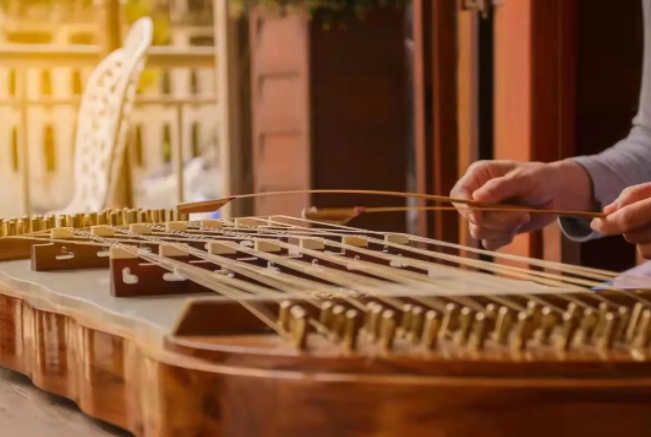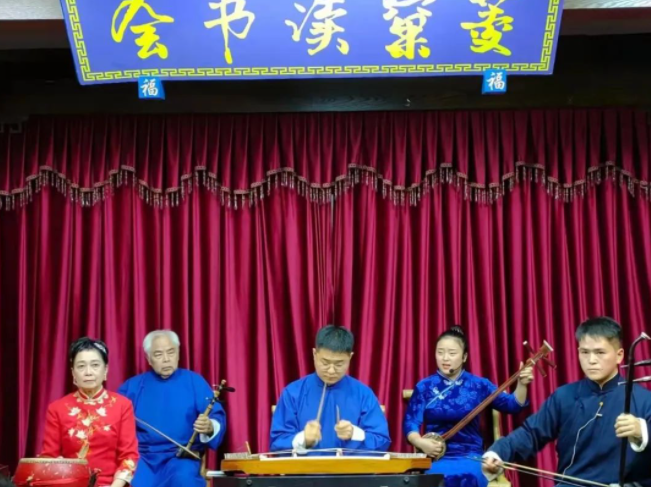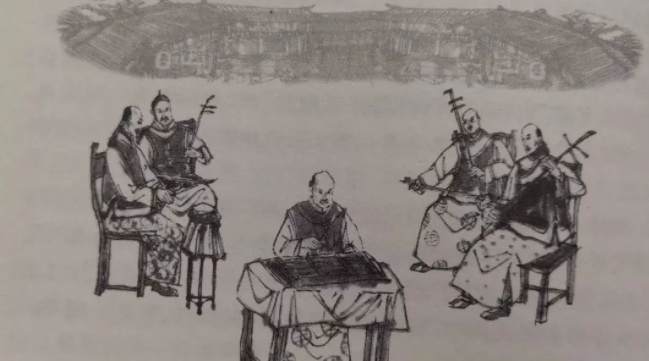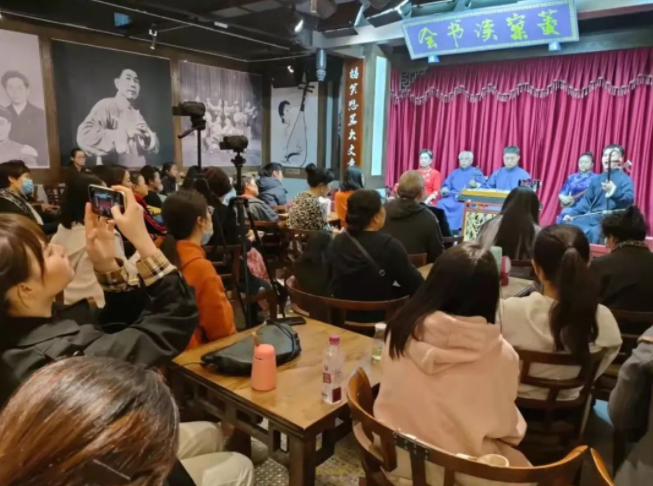Sichuan dulcimer sit on the ground to flirt and speak out
Before the Middle Ages, a kind of santur was popular in Assyria, Persia and other countries in the Middle East. With the increasingly close friendly exchanges between China and West Asia and East Asia at that time, it was introduced to my country from Persia by sea. It was only popular in Guangdong at first, and then gradually spread to all parts of China with the exchange of various places.

And it has been continuously transformed by Chinese folk artists, and this kind of string percussion instrument has gradually evolved into a Chinese dulcimer.
In the Qing Dynasty, Xu Ke wrote "Qing Barnyard Notes" (foreign qin strips), saying: "During the Kangxi period, a musical instrument imported from overseas was called 'foreign qin'. It was half as long as the qin, but slightly wider. There are copper nails at the end, and copper wire is used as a string, which is stretched on the top. Hit it with a hammer, and the shape of the hammer is like a chopstick. Its sound is like a zheng building, and its shape is like a fan.
Although the dulcimer is an imported product, after hundreds of years of development and evolution, it has been fully integrated into Chinese traditional music and has become a typical Chinese musical instrument. And also formed four major schools of Guangzhou dulcimer, Northeast dulcimer, Jiangnan Sizhu dulcimer, and Sichuan dulcimer.
Sichuan dulcimer is one of the best.
Sichuan dulcimer
Sichuan dulcimer, also known as "Sichuan Qinshu", is one of the representative genres of traditional Chinese folk art and rap art in Sichuan. It is mainly popular in the Bashu region and has a history of about hundreds of years.
According to the region, it can be divided into provincial and prefectural dialects: provincial dialects are centered on Chengdu, and state dialects are mainly spread in other regions except Chengdu, such as Luzhou River, North Sichuan, East Sichuan, etc.
According to the distribution of rivers, there are upper, middle and lower rivers.
Before the founding of the People's Republic of China, the dulcimer in Chengdu Province was divided into the Southern Association and the Northern Association. The yangqin of the Southern Association is mainly spread in the Donghuamen area, and the dulcimer of the Northern Association is mainly circulated in the Tongzi Street area. After 1920, the division of this genre gradually weakened and merged into one.
In addition, Sichuan dulcimer is also called "Tang School" and "Amateur School" according to whether they are professional or not. Gamers" (lovers).
In addition, in Sichuan dulcimer, there is the only genre named after an artist - the "De School" named after Mr. Li Decai.

The reason why it is called "Sichuan Qinshu" is that it uses dulcimer as the main accompaniment instrument, as well as drum pads, Huaigu, Sanxian, Jinghu, Erhu and so on. It is a traditional folk art form of storytelling based on singing, supplemented by speaking, and storytelling.
For traditional dulcimer, the genre that combines narrative and endorsement is often adopted. Except for the beginning and the end of each paragraph and a few lyrics interspersed in the middle of the paragraph to explain the characters, plot or environment in the third person, the main arias and narrations are the first-person language of the characters. As a whole, there are layers of performance drama plot.

When it comes to Sichuan dulcimer, the one that immediately comes to mind is "people from five directions". "Five-party people" is five actors (usually five actors on the same stage, there are rare cases more than five people) who share the same heart, you have me, and I have you; it is the fusion of five voices; it is also the emotion of five people Convergence; it is the collision of five pure hearts.
In Sichuan dulcimer, Wufangren not only represent five actors, but also five roles of Sheng, Dan, Jing, Mo and Chou. It also represents the five-party musical instrument with the dulcimer as the skeleton, the drum board and the Huai drum as the eyes, the sanxian as the muscles and bones, and the huqin and erhu as the skin. In short, the "Five Fangren" of Sichuan dulcimer refers to the form of performance in which five actors are divided into five roles, "Shengdanjing Mo Chou", each with a musical instrument accompaniment. And the meaning of such "five parties" is more than that. It is more like a kind of kinship, treating each other as "relatives" and "seating on the ground" between gestures.

Sichuan dulcimer, as my country's intangible cultural heritage, as an important part of Bashu culture, its charm not only did not pass over time, but continued to accumulate and deepen over time, making great contributions to the construction of spiritual civilization.
Involving musical instruments
Guess you like
Hot news
- 01 Ancient Legacy: The Legend of the creation of Emperor Shun and the Banjo
- 02 The handsome guy in 1997 is so advanced in pulling erhu! Netizen: Come and "wash your ears"
- 03 Dulcimer exam and performance repertoire
- 04 The difference between the five-stringed lute and the four-stringed lute
- 05 The Simple Difference Between Guqin, Se, and Guzheng
 渝公网安备 50010702504639号
渝公网安备 50010702504639号